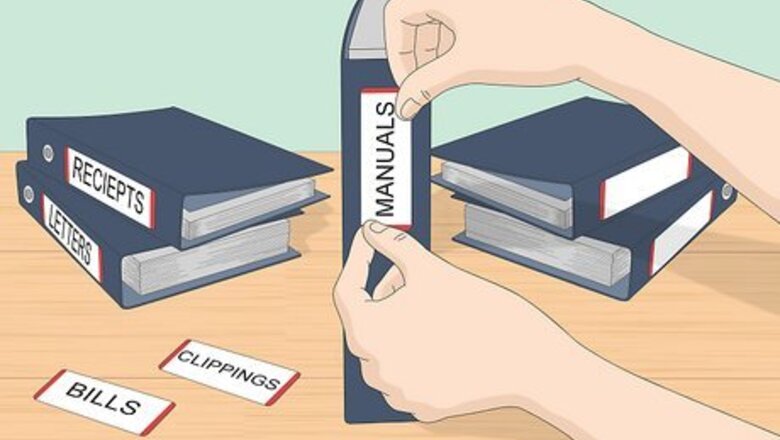
views
Put a label on each binder spine to show what’s inside.

Spine labeling let’s you quickly search for the binder you need. Though it may seem unnecessary if you only have a couple binders, clearly labeled spines will become a lifesaver as your storage needs increase. In many cases, it will make the difference between a minute-long and hour-long paper search. Many 3-ring binders come with built in label holders. If your binder does not, you can fix a label to the side using clear tape.
Sort different types of materials using colored binders.
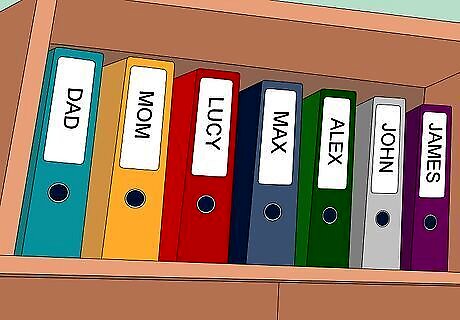
Color code your binders by what type of documents they contain. If you have a lot of binders, you can make the organization process easier by picking colors to represent different types of materials. Once you’ve selected your shades, you can either purchase colored binders or add the shades to your existing binders using markers or similar objects. Some ways to color code your binders include: A different color for each member of the family. A distinct shade for each area of your life, such as work, school, and church. Separate colors for different types of materials, including financial forms, project documents, important records, and manuals.
Set your binders out in a methodical order.
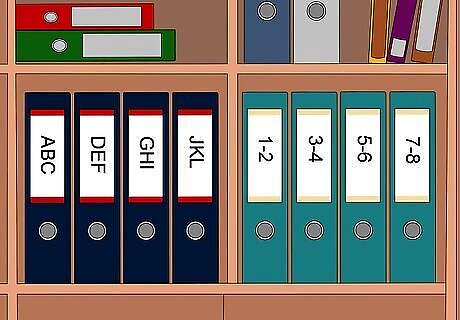
Go alphabetically, numerically, or chronologically if possible. Often, the easiest and most straightforward way to organize your binders is by using whatever system they naturally adhere to. Though the methods will differ slightly for each person, a few universal systems include: Sorting alphabetically, especially for binders with clear, consistent labeling schemes. Sorting numerically, especially for binders divided by year. Sorting chronologically, especially for binders related to individual projects.
Store hard-to-organize binders by their theme.
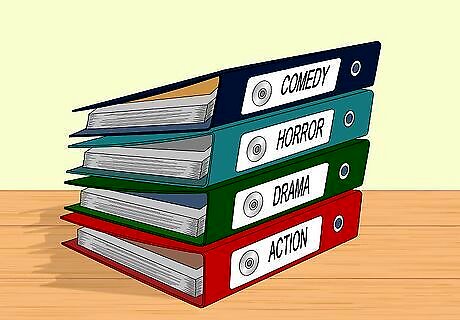
Use broad categories when you have a lot of different binders. In some cases, your folders may not fall into a clear, standardized organization scheme, making them difficult to store. To solve this problem, see if you can divide your binders into different sections based on a unifying type or theme. If you separated your materials by color, store binders of the same shade together. If you did not, try: Separating binders into clear categories, such as by school subject. Dividing binders into genres, like separating stored DVDs into comedies and dramas. Separating binders by theme, such as dividing materials related to food from materials related to safety.
Set project binders out where you can see them.

Try using multiple binders for each step of a project. As you fill them up, it’ll give you a visual indication of progress. If you’re working on a specific project or trying to meet a goal, use your binders to help! Clear off an empty shelf and place a single binder on it, representing the start of your journey. Once you fill up the binder or reach a predetermined milestone, move to another binder, creating a visual reminder of just how much work you’ve done. Try using this method of organization to: Track the phases of a project you’re working on, such as a college thesis, original novel, or crowdfunding proposal. Keep an eye on your finances by using each binder to record how many things you’ve purchased or how much money you’ve saved. Work toward personal goals, like filling your binder every time you meet a fitness or weight-loss milestone.
Put your most-used binders in spots that are easy to reach.
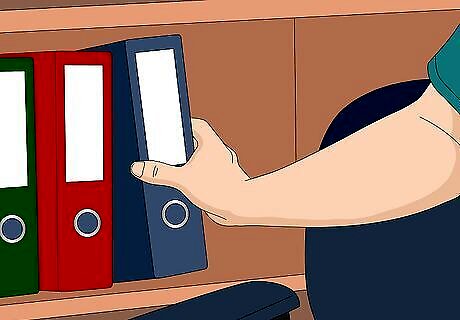
Make it easier to get the info you need. There’s a good chance that you’ll need to access some documents and materials far more often than others. To make sure you can get to them quickly, try putting the binder they’re inside on a part of the shelf that you can get to with little effort. Consider putting your most used items in their own folder.
Buy the right size binder.
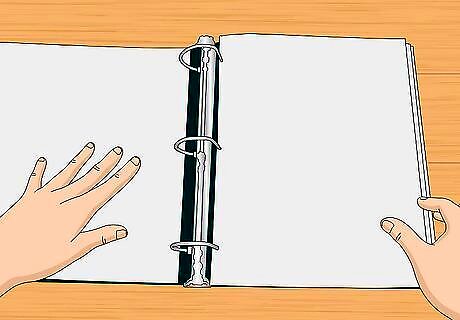
Purchase 3-ring binders that are large enough to suit your needs. Binders come in a variety of sizes typically ranging from .5 in (1.3 cm) to 5 in (13 cm). If you plan on dividing your papers and materials into many categories, go with small binders to save space. If you want to put lots of items into each binder, go with larger sizes. Look for binders at office supply and discount stores.
Divide your materials into clear groups.
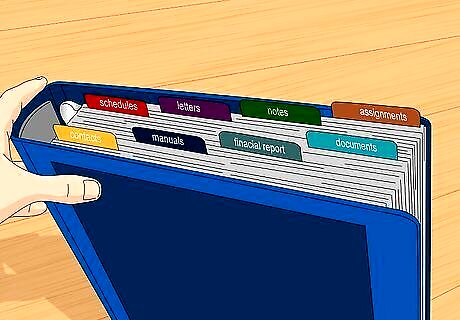
Organize a single binder with this method. To make the most of each binder, divide your papers and other storable objects into distinct categories such as school, work, and home. If these groups are all relatively small, then you’re good to go. If they’re quite large, try dividing them into subcategories like: Financial records Receipts Important documents Signed paperwork Manuals Assignments Essays Tests Letters Schedules Notes Contact information
Use dividers to create sections in each binder.
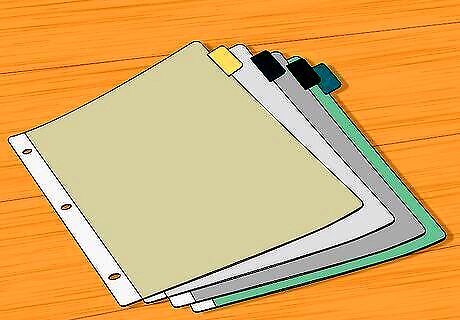
Dividers make it easy to flip through and find the papers you need. Unless each binder contains exactly 1 type of material, it’s important to separate different documents and items using internal dividers. Purchase hole-punched paper or plastic dividers from an office supply or discount store. Then, label each divider and place them inside your binder directly in front of the section they represent. Try to purchase dividers that come with tabs on the side so you can flip through your binders quickly.
Store paper that can’t be hole-punched in clear sheet protectors.

This method prevents you from stuffing the front or back pockets of your binder. If you’re trying to put a lot of paperwork inside your binder, the easiest way to do it is by punching holes in the left side of your documents and slipping them onto the binder’s rings. If you’re working with individual sheets of paper or documents that can’t be hole punched, hold them using clear, 3-ring sheet protectors instead.
Store other items using specialty sleeves.
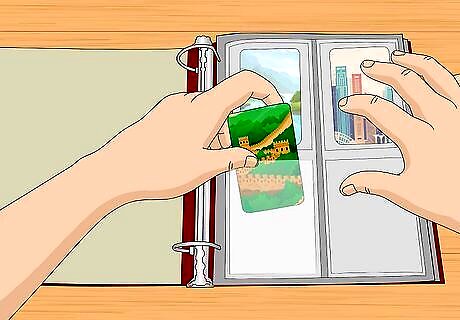
Binders can hold anything from collectible trading cards to electronic equipment. Though you can’t hole punch these items, you can place them inside a variety of specially designed 3-ring sleeves available online and from specialty shops related to each object. Some popular sleeves include: Binder pouches, which store objects like school supplies. Disc sleeves, which store CDs, DVDs, and similar items. Album sleeves, which store photos and images. Collectible sleeves, which store valuable items like stamps, trading cards, and coins.




















Comments
0 comment